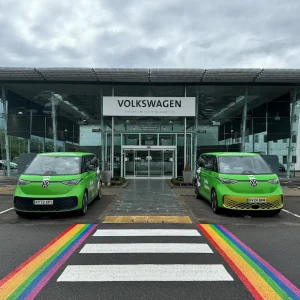Mazda is claiming a fast start for its new lower medium 3, with the firm’s fleet boss explaining that the new car has cured the issues that saw its predecessor not secure attention from the business car sector.
“In the past, the 3 has not been a massive fleet car for us – it was good looking and had reasonable fuel consumption and CO2, but it wasn’t the best at anything,” Mazda head of fleet Steve Tomlinson told BusinessCar.
“The new car has started very swiftly in fleet and given us an opportunity to get onto more choice lists.”
Perhaps surprisingly, the Fastback saloon model has accounted for 40% of Mazda 3 sales into fleet so far, which Tomlinson put down to the car being better-looking than rivals. “It doesn’t look like a C-segment car with a boot – it looks coupe-ish despite being a four-door,” he said.
Tomlinson defended the emissions figures of the new 3, which with Mazda’s Skyactiv efficiency technology matches the larger 6 model at 104g/km, although that is with a 150hp diesel.
Most rivals have a lower-powered alternative that, in the case of firms such as Volkswagen, Peugeot, Ford and Seat, gets below 90g/km.
“The whole point of Skyactiv is that it’s got efficiency but doesn’t compromise on performance,” he said. “Skyactiv is not an eco sub-brand. What we’ve achieved on real-life economy and CO2 is better than a lot that are out there – either downsized with a turbo or hybrids.”
He disputed whether failing to get below 100g/km would harm corporate appeal. “We know people tend to go for the best car in their band,” he said.
“If we can make our cars the best cars available at their level, we tend to do quite well.”
Tomlinson did, though, admit that smaller and more efficient engines will follow in time.
“We will get there – we have a 2.0 and 2.2 diesel at the moment, but we will have smaller engines at some point in the future. It’s obvious when you look at the line-up of cars coming,” he commented.
“The vision of the engineers is to get the internal combustion engine down to the well-to-wheel of electric cars, which obviously varies from country to country, but we’re looking at 60g/km-70g/km.
In the next couple of years, Mazda has confirmed “five or six” new or facelifted models coming to market.
“As a brand, the 3 makes us more confident; we are a fleet player, but we have never been massive, and this generation of cars, with the 6 and CX-5 as well, gives us more opportunity,” he concluded.
“We’re in as good a place as we have ever been from a fleet perspective – a better offering with three models whereas a couple of years ago it was just the Mazda 6.”





